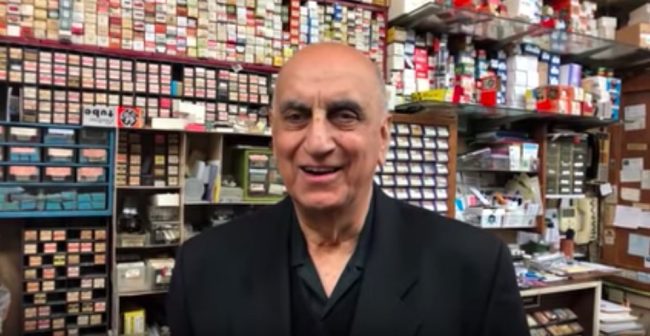Many thanks to SWLing Post contributors Scott Gamble and Bill Mead who both share the following story via the CBC News:
Joseph Hovsepian says he is part of the last generation that knows how to repair electronics
Joseph Hovsepian has been repairing? radios for so long that he claims that he can sometimes smell the problem.
“When I pick up a radio, I turn it on or I plug it in and the way it smells, the way it sounds or doesn’t sound, the way it crackles and fades away, all these things are recorded in my brain and I know exactly how to start and how to fix it,” he said.
Since 1960, Hovsepian has been fixing radios, turntables and other electronic gadgets from his Parc Ave. repair shop.
The 79-year-old sees himself as part of the last generation of people trained in the art of repair.
“We have lost the ability to touch things, fix things, repair them and feel good for doing it,” he said.
For almost his entire life, Hovsepian has been tinkering with radios. He built a crystal radio when he was 12, and his first tube radio at 15.
[…]He believes that today’s electronics lack the warmth that the old radios offered. Hovsepian said smartphones look dead to him compared to old technology.
“Even the sound of the old radios, a little scratch here, a little scratch there…This is radio.”[…]
This is a charming story and I think Post readers can certainly understand why radio seems to be in a class of its own. I feel very fortunate that I’m friends with two people who repair radios for others, my buddy Charlie (W4MEC) and Vlado (N3CZ). Both are kind enough to show me the ropes as they troubleshoot problem sets.
Post readers: Do you live somewhere with a radio repair shop? Have any readers ever visited Mr. Hovsepian’s shop in Mile End? Please comment!


Subject: Realistic DX 160 shortwave multiband receiver repair inquiry.
This receiver’s band A (150 to 400 KHZ) and B band (AM band) audio is okay but I cannot receive any shortwave broadcast or WWV station audio on any of the C, D and E bands (1.55 to 30 MHz). The panel switches/meters and adjustment controls work okay. I have not made any repair attempts or modifications. The radio has been in storage for many years and is in excellent cosmetic condition. I am the original owner.
Next time I go to Montreal I will have to visit his shop just because.
Take a little extra cash to buy one of those tube radios, too!
About smelling the problem: This way the Grundig brand started 🙂
Until after WW2 the power grid in Germany was segmented. For example in Nuernberg you had an AC grid while a few km to the west Fuerth had a DC net. So when a consumer buyed a radio set in Nuerberg and set it up in Fuerth chances where good tht the transformer got really hot but no program came out.
Many such sets came to the radio shop of Max Grundig in Fuerth. You can be sure that he smelled the problem before the owner said a single word 🙂
After WWII the allies forbade the production of radio sets here in Germany. Max Grundig solved the problem by selling a radio kit, the Grundig Heinzelmann.
The rest is history: Grundig got one of the biggest producer of radio, TV and tape recoder sets. Further boosts came from color TV and tape cassette recoders. In the 1980s the decline began. Grundig built video tape recoders for the Video2000 system, that was technically superior to VHS, but VHS won. Then the producers in the Far East conquered the market with much lower prices. Grundig went bankrupt in 2003.
Today producers can buy the Grundig brand can be bought for specific products. There is no development or production by a Grundig company.
Fascinating! Thank you for sharing!
Now thats some history very few would be aware of… Thanks Although I appreciate Grundig’s beginnings they are now officially off my Christmas list – They sound like a sort of egg without a yoke – not very appetizing. A company like that sells what’s popular, not necessarily whats good…. Like a pop music band.
Now this is the kid of article I love to read slowly… These guys, and watch repairmen, are heroes unsung. Im currently reading several books of radio repair from the ’40s… I also found and read last week a pdf version of RADIO MONITORING; A HOW TO GUIDE – by N2EI. I missed that one and was happy to give it my attention. I even learned a thing or two I didnt know after 50 years of SWling and 40 years of ham radio.
Deepest respects and hats off to these men (and women) who sustain the science, hobby, and art of radio. Congratulations to this blog for posting in support of such a fine example of what soon may become a lost art.
In my country there was a boyscout and girlscout ham radio jamboree today… What a pleasure it was to tune around 40 meters and hear youth tickle the mic switch for the first time…. You just have to love those mothers, fathers, ham friend and clubs who selflessly supported these kids and guided their conversations in the best amateur radio traditions.
Joe